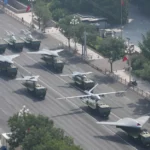Defense contractor Leidos and marketing-tech firm VML have jointly unveiled Imperium, a new cloud-native command-and-control (C2) ecosystem designed to support Joint All-Domain Command and Control (JADC2) initiatives. The platform aims to accelerate decision-making across domains—land, air, sea, space, cyber—by fusing data from heterogeneous sources into a unified operational picture.
Imperium’s Role in the JADC2 Vision
The U.S. Department of Defense’s push toward Joint All-Domain Command and Control (JADC2) seeks to connect sensors to shooters across service branches through an interoperable digital infrastructure. Imperium is positioned as a key enabler of this vision by delivering real-time situational awareness and decision support tools that integrate data from multiple domains.
According to Leidos officials at the launch event during the 2024 GEOINT Symposium in Kissimmee, Florida (May 6–9), Imperium is designed to be “sensor-agnostic” and capable of ingesting structured and unstructured data from both legacy military systems and emerging platforms. This includes ISR feeds from satellites, UAVs, ground sensors, maritime assets, as well as open-source intelligence (OSINT) streams.
The system provides commanders with a fused common operating picture (COP) that can be customized by echelon or mission type. It also supports dynamic tasking of assets based on real-time threat assessments or mission priorities.
Technical Architecture: Cloud-Native Meets Tactical Edge
Imperium is built on a cloud-native microservices architecture, enabling rapid scalability across different operational environments—from enterprise-level joint operations centers down to tactical edge nodes deployed in austere conditions. The platform supports both on-premises deployments using containerized services as well as hybrid-cloud configurations leveraging commercial cloud providers such as AWS GovCloud or Microsoft Azure Government.
This flexibility allows users to deploy Imperium on disconnected or denied networks via ruggedized edge compute nodes while maintaining synchronization with higher-echelon systems when connectivity is restored. The system also incorporates zero-trust cybersecurity principles by design.
Key architectural features include:
- Kubernetes-based orchestration for container management
- RESTful APIs for third-party integration
- NATO STANAG-compliant data models for interoperability
- Support for Link-16 and other tactical datalinks via gateway interfaces
- Edge AI modules for local processing of sensor data without latency penalties
AI/ML-Powered Decision Support Capabilities
A central differentiator of Imperium is its integration of artificial intelligence (AI) and machine learning (ML) algorithms to enhance operational decision-making. These capabilities are embedded throughout the platform—from automated anomaly detection in ISR feeds to predictive logistics modeling using historical sustainment data.
The system’s AI engine can perform real-time entity recognition across video imagery or text-based inputs such as SIGINT transcripts or OSINT feeds. It also enables course-of-action analysis by simulating potential adversary responses based on doctrinal behavior models.
This aligns with the Pentagon’s broader goals under its Chief Digital and Artificial Intelligence Office (CDAO), which has emphasized the need for explainable AI tools that augment human judgment rather than replace it outright.
User Experience Designed for Mission-Centric Workflows
A unique aspect of Imperium’s development was its user interface/user experience (UI/UX) design process—led largely by VML—with input from active-duty personnel across multiple services. The interface prioritizes intuitive workflows tailored to specific mission sets such as targeting coordination, ISR collection management, or cyber defense operations.
The UI includes customizable dashboards with drag-and-drop widgets that allow operators to build their own mission views without coding knowledge. For example:
- An air battle manager can overlay Blue Force Tracker positions with radar tracks from AWACS aircraft
- A cyber analyst can correlate intrusion alerts with geospatial patterns of hostile activity
- A logistics planner can visualize supply chain disruptions alongside terrain constraints using integrated GIS layers
This human-centered approach reflects lessons learned from prior failed C4ISR systems that were overly complex or required extensive training before field use.
Status of Deployment and Future Roadmap
As of Q2 2024, Leidos confirmed that early versions of Imperium are undergoing evaluation within select U.S. combatant commands under controlled experimentation environments aligned with JADC2 Pathfinder programs. While no formal Program of Record has been announced yet by DoD acquisition offices such as PEO C3T or DISA’s Hosting & Compute Center (HaCC), discussions are reportedly underway regarding broader adoption pathways via Other Transaction Authority (OTA) contracts or SBIR Phase III transitions.
The roadmap includes plans to integrate additional data fusion capabilities using natural language processing (NLP), expand coalition interoperability features via Five Eyes partners’ standards compliance testing, and incorporate kinetic/non-kinetic effects coordination modules—including electronic warfare cueing tools.
Civil-Military Applications Also Under Consideration
Beyond defense applications, Leidos hinted at potential use cases in homeland security domains such as border surveillance fusion centers or FEMA disaster response coordination—where multi-agency situational awareness is critical but often fragmented across stovepiped systems.
A Competitive Landscape Emerges in Tactical C2 Platforms
The launch of Imperium places Leidos into direct competition with other major defense primes developing next-gen C4ISR solutions aligned with JADC2 imperatives:
- L3Harris’ Compass Call II + HIVE ecosystem;
- Northrup Grumman’s FORGE framework;
- Booz Allen Hamilton’s SnapStrike platform;
- Palantir’s Gotham + MetaConstellation stack;
- Sierra Nevada Corporation’s TRAX system;
The differentiators will likely come down to modularity at scale, ease-of-integration into existing force structures, latency performance at the tactical edge—and ultimately warfighter trust in the system’s usability under pressure.










